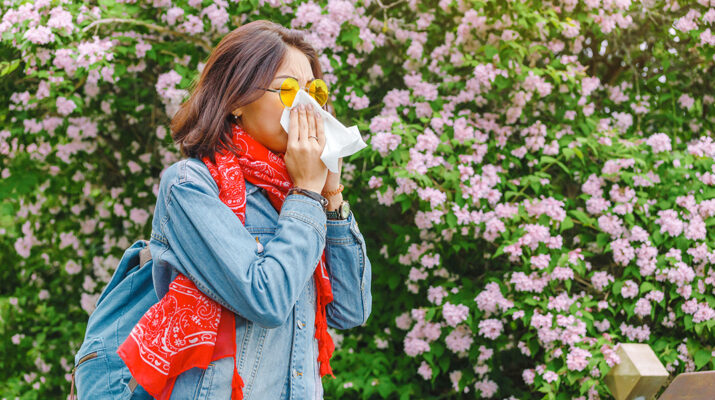‘In 2023, Rochester was voted eighth worst in the country for spring allergies and top 10 worst places to be for asthma — and this year promises more of the same.’
By Albert S. Hartel M.D.
Spring is in the air, and along with the excitement of the Western New York beauty, nice weather and outdoor activities, also comes the dread of the annual onslaught of seasonal allergies and asthma.
In 2023, Rochester was voted eighth worst in the country for spring allergies and top 10 worst places to be for asthma — and this year promises more of the same.
But suffering from allergies and asthma does not need to mean boatloads of medications or inhalers or mean hiding inside hoping for relief.
Allergic symptoms of sneezing, sniffling, itching runny nose, nasal congestion, post nasal drip, facial headaches, fatigue, itchy, watery eyes, throat clearing, coughing, chest tightness and difficulty breathing are due to your body’s overreaction to normally harmless substances such as plant pollen.
The pollen from pretty flowers usually isn’t the major culprit, as their pollen is heavy and spread by insects.
Pollen from trees, grasses, weeds and mold spores are released in a seasonal pattern and are blown in the air for long distances (Ragweed has even been detected in the air more than 100 miles out to sea).
Rochester is a hotspot because the region is very fertile ground for vegetation and packs a full season of growing into only seven warm months!
Also contributing to the worsening is the weather becoming less cold and snowy than it used to be, which leads to a longer growing season but also has caused an exponential increase in outdoor mold, as decaying leaves and vegetation get moldy but now survive the winter, and get released in the air like pollen whenever not covered by snow. The effect is cumulative and even things like dogs, cats, dust mites and other exposures that may not be enough to cause symptoms by themselves, add to the total amount of chemicals released into the nose, lungs, eyes and sinuses and cause someone to have symptoms much easier and more intensely.
Both allergies and asthma go hand in hand. Allergies are not only a major trigger of asthma but also a significant cause of baseline underlying lung inflammation, which makes asthma more likely to spasm when infections, exercise, cold air, irritants (like last year’s smoke from the Canadian wildfires) or more environmental allergens come along.
Reactions tend to get progressively worse over time and more chemicals released causes more symptoms and more underlying inflammation even with less and less exposures. Underlying nasal and lung inflammation also leads to susceptibility to more infections, which in turn can also lead to more asthma flares.
It is critical for asthma and allergy sufferers to determine their allergic triggers and causes of underlying inflammation to improve control and reduce need for long term daily medications, which often are otherwise needed lifelong. Environmental avoidance and reduction measures can reduce exposures, and allergy shots can desensitize and turn off allergen reactions so that the environmental triggers cause less baseline inflammation less likely to tip someone over and cause symptoms.
Shots also often help reduce long-term nasal and asthma medication needs as well as improve symptoms. In many people, allergy shots can eventually be stopped with continued control after discontinuation.
The allergen and asthma trigger cycle repeats every year and rather than suffer, hide inside or load up on allergy and asthma drugs, other options can turn down your allergies, decrease medication needs and help you enjoy the wonderful but brief nice weather and wonderful outdoors Upstate New York has to offer.
 Physician Albert S. Hartel specializes in pediatric and adult allergy and immunology. He is the president of Allergy Asthma Immunology of Rochester. For more information, visit https://aair.info or call 585-442-0150.
Physician Albert S. Hartel specializes in pediatric and adult allergy and immunology. He is the president of Allergy Asthma Immunology of Rochester. For more information, visit https://aair.info or call 585-442-0150.

